[Jeu de temps / Times Play 2022]
Prizewinners and Thematic Award Recipients
Collaboration with CMMAS (Latin America)
Results | Artists and Submissions | Events | Awards | Jury
For each edition of JTTP, a broad and diverse international jury takes on the task of judging all submissions to the project. The creators of the top five selected works receive prize packages. Cash prizes are given to the first-, second- and third-place prizewinners, and to the thematic award recipients. JTTP Project Partners, Donors and Media Partners are listed on the Prizes and Awards page.
Over the course of the 2022–23 year, the selected works from JTTP 2022 (below) are presented in several Events, Concerts and Radio Broadcasts coordinated in collaboration with JTTP Media Partners. On the Artists and Submissions page you can listen to all works submitted to this year’s edition of JTTP and read the programme notes and artist biographies.
Biographies and Programme Notes
Diego Bermudez Chamberland • Alejandro Brianza • Juan Cáceres Avitia • Óscar Andrés Chavés Morales • Guillermo Eisner Sagüés • Elliot Yair Hernández López • Véro Marengère • Jérémie Martineau • matias sanchez greco • Joseph Sims and Katie Finn • Steven Webb
Diego Bermudez Chamberland
JTTP 2022 Second Prize winner (Canada) and recipient of the JTTP 2022 Martin Gotfrit and Martin Bartlett Award for live electroacoustic practices.
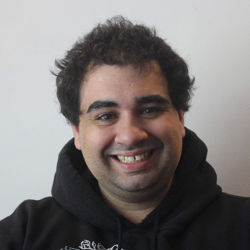
Diego Bermudez Chamberland is a Québec-based sound artist who works in several areas related to creation such as composition, sound design, installation and live performance. His practice is inspired by his human and musical experiences. Collaboration is an essential aspect of his artistic practice; he sees it as a way to transcend his reflexes and thus bring his creations to new horizons. He is also interested in the evocative power of sound and its ability to transport us into another state of mind. He devotes most of his time to exploring his discipline through multiple projects. Diego is currently completing a master’s degree in electroacoustic composition at the Conservatoire de musique de Montréal.
Manic (2021 / 13:17)
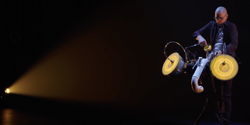

Manic is an atmospheric composition for the Babel Table which proposes a machine-like sound world. The transformations of the instrumental timbre and its deployment are tainted by the fluidity and unpredictability of nature. During the creative process, I was interested in this machine / nature duality, which reminded me of hydroelectric dams. I imagined, through an exploration of sound, how the presence of these gigantic human constructions powered by water might manifest itself. I would like to thank Jean-François Laporte and Productions Totem Contemporain for their assistance in the realization of this work as well as for their performance and recording of the composition.
Alejandro Brianza
Recipient of the JTTP 2022 Hildegard Westerkamp Award for soundscape and sound installation.
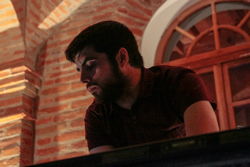
Composer and recorder player, researcher and teacher Alejandro Brianza holds a master’s degree in Scientific Research Methodologies and a degree in Audiovisual, Sound and Recording Technologies, both from the Universidad Nacional de Lanús. He teaches at the Universidad del Salvador and the Universidad Nacional de Lanús. He has given conferences and workshops in congresses and different national and international academic meetings about his research related to sound technology, electroacoustic music and contemporary languages. His productions have been presented in Argentina, Brazil, Chile, Peru, Ecuador, Colombia, Mexico, the United States, Canada, Spain, France, Monaco, the United Kingdom and Japan. He is a member of the collaborative platform Andamio and the Network of Latin American Sound Artists.
Kowloon (2022 / 5:51)
Located in Hong Kong and also known as “the city of darkness”, Kowloon was the most densely populated settlement in history. And although its inhabitants maintained an organization based on a harmonious state of anarchy, certain problems related to gangs, drugs and other illegalities led to Kowloon’s demolition in 1994. The memory of Kowloon today is a cyberpunk postcard, swinging between tranquility and chaos.
Juan Cáceres Avitia
JTTP 2022 Third Prize winner (Latin America).
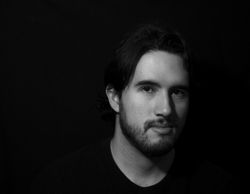
Juan Cáceres Avitia began his professional studies in piano at Universidad Nacional Autónoma de México (UNAM), later studying musicology with Ricardo Miranda and electroacoustic composition with Josué Peregrina at the Conservatorio Nacional de Música. His music has been presented in Argentina, Japan, Mexico and the USA. Cáceres was the third-place winner in the Latin America category of JTTP 2022, coordinated by the Canadian Electroacoustic Community (CEC) in collaboration with the Centro Mexicano para la Música y las Artes Sonoras (CMMAS). In 2019 he was granted a scholarship from the Cursos Universitarios e Internacionales de “Música en Compostela” to study musicology in Spain. He has presented his research at Festival Visiones Sonoras (2021) with the conference “The Acousma of the Acousmatic Music” and at the Colloquium Miguel Bernal Jiménez (2020) with the conference “Beethoven and Tarkovsky: from ‘Elysium’ to ‘Nostalghia’.”
Entendre la sensation (2021 / 6:42)


What matters here is the double meaning of the French verb “entendre”: to listen and to hear, but also, to understand.
Óscar Andrés Chavés Morales
JTTP 2022 Fifth Prize winner (Latin America).
Óscar Andrés Chavés Morales has been working in music since he was a child playing traditional instruments (piano, accordion, tiple, guacharaca), however, electroacoustic is part of that huge universe that has been always present and returns cyclically as creative moments of composing without limits — sometimes with video, sometimes instrumental, sometimes mixed, sometimes noise or performance but always looking for a whole and independent picture of his own life at a specific moment with its specific environment and culture where music is a state of the soul and not a linear path from the easiest to the hardest, from success to indifference.
The Garden on the Other Side of the Fence (2021 / 8:28)
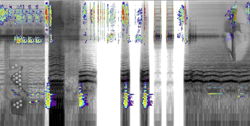

The Garden on the Other Side of the Fence is born of a listening score for an electroacoustic mixed work with tape, accordion and guacharaca, and meant to be played live. The graphic possibilities afforded by representing sound parameters as spectral visualization provide the tools to go further with some additional emotional understanding: colours, proportions and thresholds not only quantify but can express as well. This work seeks to articulate a bothersome situation in my life in the rainy Colombian countryside: to live next to a large flower-growing company that exports its harvest for sale to countries in the Northern Hemisphere during the winter.
Guillermo Eisner Sagüés
JTTP 2022 Fourth Prize winner (Latin America).
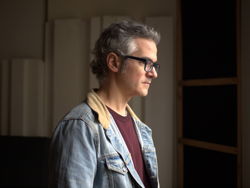
Born in Uruguay, Guillermo Eisner Sagüés holds a Doctor in Music Composition from the Universidad Nacional Autónoma de México (UNAM). He has developed acoustic and electroacoustic concert music, participating in festivals in South America, North America and Europe. In 2021 he released the CD Música para guitarra (Chile Clásico). In 2019 he released the acoustic recording música de barrio (Cero Records) on CD. In 2017 he premiered the chamber opera Titus at the Teatro Helénico in Mexico City. In 2015 he published the book and CD guitarrerías. 10 monotemas para guitarra (Microtono Editions) and premiered the chamber opera La Isla de los peces at the GAM Cultural Center in Santiago (Chile). In the year 2012 he released the electroacoustic music recording habitar el tiempo on CD. Since 2019 he is a full-time professor in the Department of Sound of the Faculty of Arts at the Universidad de Chile.
Esculturas temporales (2022 / 7:53)
Esculturas temporales is arranged as a continuum of sound fragments that seeks to construct diverse ways of sculpting time, diverse gestures, diverse paths of accumulation and distension of energies. Composed exclusively from double bass samples, the work takes sound as a malleable material and proposes to sculpt on it as if we could grasp it, take it, feel it with our hands. In short, it is a vain attempt to make tangible an ephemeral material such as sound, of which we can only verify the temporal and spatial experience that its fleeting presence leaves us with.
Elliot Yair Hernández López
JTTP 2022 First Prize winner (Latin America).
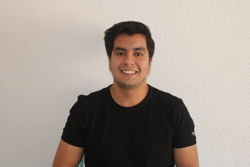
Mexican composer Elliot Yair Hernández López experiments with different objects and disciplines to create immersive, reflective and abstract pieces with the aim of creating sensations and emotions for the viewer using audiovisual elements. Among his interests are multi-channel electroacoustic composition, videomapping, data visualization and sonification, programming, electronic art and sound spatialization. Hernández López studied sound art with Manuel Rocha Iturbide, multi-channel electroacoustic composition with Edmar Soria and electronic art with Hugo Solis, and is currently pursuing a master’s degree in Tecnología Musical at UNAM (Mexico City). His audiovisual and electroacoustic works have been presented in Mexico, Colombia, Peru, Argentina, USA, Canada, UK, Japan, Portugal, Switzerland and Austria. He was a winner in the international competition Young Lion*ess of Acousmatic Music (Vienna) and First Prize winner (Latin America) in JTTP 2022 (CEC, Canada), and received a special mention in the 2021 Ars Electronica Forum Wallis for Ritual.
Ritual (2021 / 5:25)
Ritual is a sonic exploration that combines day-to-day sounds digitally transformed; It narrates the story of a being trapped in an eternal dream that repeats itself infinitely, each repetition is a stage of dreaming deeper and deeper.
Close your eyes, inhale and exhale, repeat three times.
—What am I listening to?
Move, feel the sound.
—What is happening?
A dream, a dream that becomes real.
—Do you hear the voices?
I feel like I’m trapped, it’s so unreal this feeling.
—What do you feel?
Anguish, as if everything is closing around me.
—Do you hear the bells?
No, I don’t hear anything, I only feel this body holding me, in an eternal illusion.
—Listen closely to the mantra…
Véro Marengère
JTTP 2022 Fourth Prize winner (Canada) and recipient of the JTTP 2022 Micheline Coulombe Saint-Marcoux Award for self-identified female or non-binary electroacoustic artists.
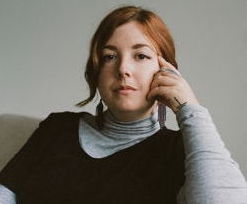
Véro Marengère is an audiovisual artist and cultural worker who lives and works in Tio’tia:ke / Montréal. Evolving between 3D video art, sound design and live performances, her practice reflects on the digital manifestation of animist rhetoric and botanist literature. She has a graduate degree in digital music from the Université de Montréal. Her work has been presented notably at MUTEK, OFF Jazz festival, AKOUSMA, MAPP_MTL and Pop Montreal. She has worked at Arsenal Contemporary Art, Art Souterrain and now works at the renowned Indigenous Network of Montréal.
Hydra (2022 / 6:00) [videomusic]
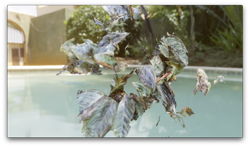

Hydra is a 3D video artwork made with photogrammetry, scanning, 3D modeling and animation. The sounds are made exclusively from granular synthesis and voice synthesis via SuperCollider. The work evokes the quiet strength of plant beings. From being nearly totally paralyzed in a “natural” environment to being fully mobile and vibrant in an “artificial” environment, the plant no longer resembles a plant, but rather more an algae or mineral being. The work questions our tendency to oppose the natural of the unnatural. In this meditative and benevolent 3D alterworld, plants explore the ambiguity of their own identity.
Jérémie Martineau
JTTP 2022 Third Prize winner (Canada).
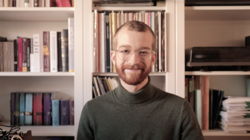
Jérémie Martineau is an audio-visual artist, multi-instrumentalist and educator based in Montréal. His multidisciplinary work combines electronics, acoustic, video and spatialization to create an immersive world in which the public can be transported to. With a bachelor’s degree from the Université de Montréal in mixed composition under Pierre Michaud, Jérémie is currently finishing his master’s degree in the same institution under the co-direction of Jimmie LeBlanc and Myriam Boucher.
Distractions, Horizons (2022 / 5:34) [videomusic]
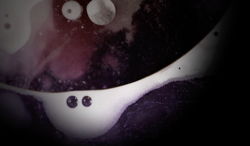

Distractions, Horizons is an audiovisual performance characterizing the dynamics of concentration experienced during meditative practice. It invites us to oscillate between global attention and focal attention, in addition to portraying the difficult exercise that is mindfulness.
matías sánchez greco
JTTP 2022 Second Prize winner (Latin America).
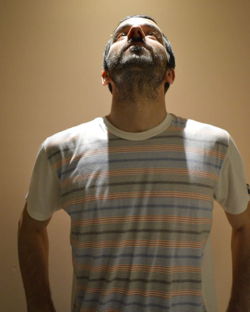
Trumpeter and composer Matías Sánchez Greco studied with Jorge Sad Levi (composition), Daniel Crespo (trumpet, Buenos Aires Filarmonic Orchestra) and Andrea Escobar (chamber music) at the Alberto Ginastera Conservatory in Buenos Aires. He was invited to participate in the 2019 Monaco Électroacoustique biennial, directed by French-Argentinian composer Mario Mary at the Académie Rainier III in Monaco. He has also taken part in masterclasses and conferences by such prestigious composers as Ricardo Mandolini, Daniel Teruggi, Mario Mary and Maria Cristina Kassem, as well as renowned ensembles and musicians like Sigma Project ensemble and Gagik Gasparian. His 2020 work alquimia, magia, sueños was premiered in the 2021 Transversal Sonora festival in Manizales (Colombia), and he recently completed two mixed works, desde tu corazón, un rayo rojo (trumpet and tape) and Los pájaros siguen su canto (flute, piano and tape).
alquimia, magia, sueños (2020 / 10:05)
This work was composed from the study of different objects, their sound projection and the possibilities of transformation. It intends to be an approach and a tribute to Pierre Schaeffer. A poetic search on the dialogues between materials. Thus, one goes from a dream to an ethereal field or to more iterated articulations. The concrete, the acousmatic, the immaterial as a poetic encounter.
Joseph Sims and Katie Finn
JTTP 2022 First Prize winners (Canada) and recipients of the JTTP 2022 Jean Piché Award for videomusic, new media and creative coding.
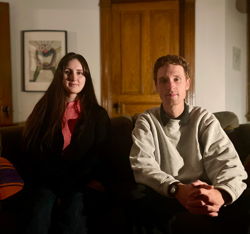
Joseph Sims is a composer and musician born in London (Ontario) and is currently based in Montréal. His work acts as an amalgamation of sonic styles, frequently exploring the relationships between concrete and electronic sources. With roots in folk music, his compositional approach remains grounded in intuition and narrative — and continually explores new sonic pallets as a means of expression. Multi-channel, fixed-medium composition is his primary focus, but a love for visual media is expressed through frequent collaboration with animators and film makers. He is currently finishing his bachelor’s in Electroacoustic Studies at Concordia University and received the Marguerita Award in Electroacoustic Studies in 2020.
Katie Finn is an emerging illustrator and animator born in London (Ontario) and currently living and working in Montréal. Her work incorporates a mixture of analogue and digital techniques, exploring new mediums in order to service the experiential and narrative possibilities of animation. Katie will continue to animate forever.
e (mi) (2022 / 7:11) [videomusic]
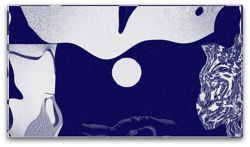

e (mi) is an audiovisual composition created by Joseph Sims (sound) and Katie Finn (animation). The piece explores contemporary and traditional æsthetics for visual music, displaying a wide variety of gestural and textural sound-image relationships. The sonic palette finds unity in a variety of materials (field recording, digital and analogue synthesis, concrete recording, etc.). Similarly, the image uses a range of techniques such as hand-drawn animation, coding and 2.5D animation. The focus was to create even hierarchical status in both the sound and image. This was achieved by each artist influencing both mediums at every stage of the creation. The macro and mezzo structures were determined by a visual score, while gestural energy and textures were realized through the sonic material.
Steven Webb
JTTP 2022 Fifth Prize winner (Canada).

Originally from South Africa, Steven Webb is a Toronto-based performer, composer and audio engineer. His current compositional work is concerned with examining the human experience — with the disorientation, confusion and dread that arises from living in a world dealing with a climate crisis, growing conflict and marginalization towards minority groups, and the increasing isolation of the individual despite our hyper-connectivity. Steven has written music for a wide variety of ensembles, and his repertoire includes choral, chamber, electroacoustic and orchestral music. His compositions and arrangements have been performed by The Winnipeg Symphony Orchestra, The Scarborough Philharmonic Orchestra, The Thin Edge Music Collective, Pro Coro Canada, The Hamilton Children’s Choir, Exultate Chamber Singers and Prairie Voices, among many others. Steven is a member of SOCAN, an Associate Composer at the Canadian Music Centre and a member of the Screen Composers Guild of Canada.
iSAD v.1.0 (2021 / 13:51) [videomusic]
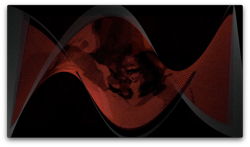

iSAD or “Internet Separation Anxiety Disorder” is a term used online to describe the anxious feelings associated with being separated from the digital world for an extended period. During the pandemic, this digital separation manifested with real consequences, as any loss of signal led to a loss of communication with other humans entirely. Exploring online forums during the first Covid lockdowns of March-December 2020 led me to encounter other peoples' stories of their battles with loneliness, and highlighted to me the importance of digital spaces in contemporary social life. Intersecting with these spaces are AI Bots, which are becoming an increasingly frequent part of moderating online communities. I posed questions to the AI GPT-3, asking it about happiness, predictions for the future and how it felt to be separated from humans. Compiling these answers, I interspersed them with the sounds of 1990s Apple Macintosh computers and a poem by Victoria Liao.
iSad — a friend
Or a closet face
at home to mend
and clothed to send
to caustic space?
Is ad a friend,
or made to end?
A cause to pace
home to amend
that sad’s a face,
lost to a rend.
I sat a friend
at home to mend.
—Victoria Liao

Social top